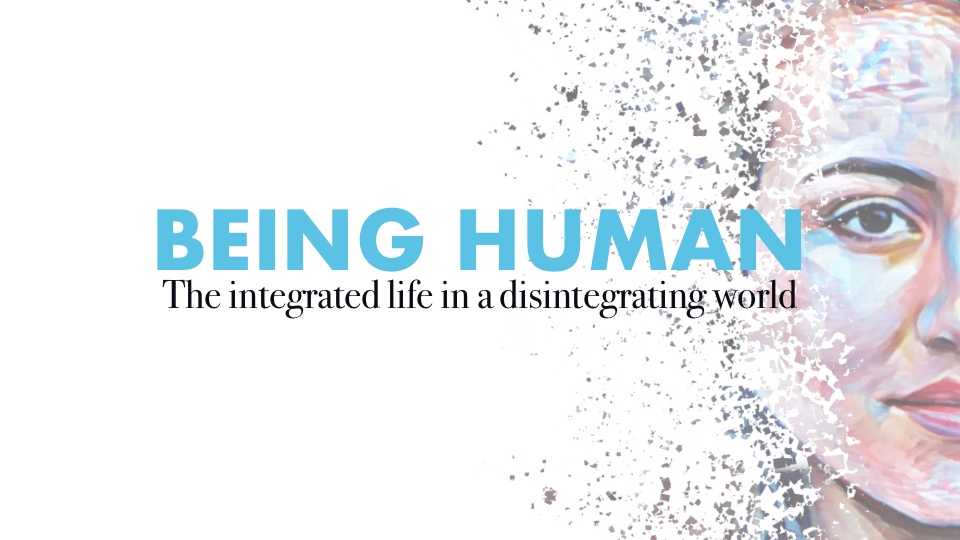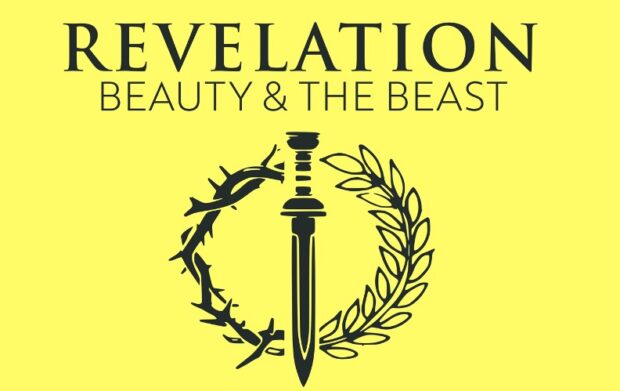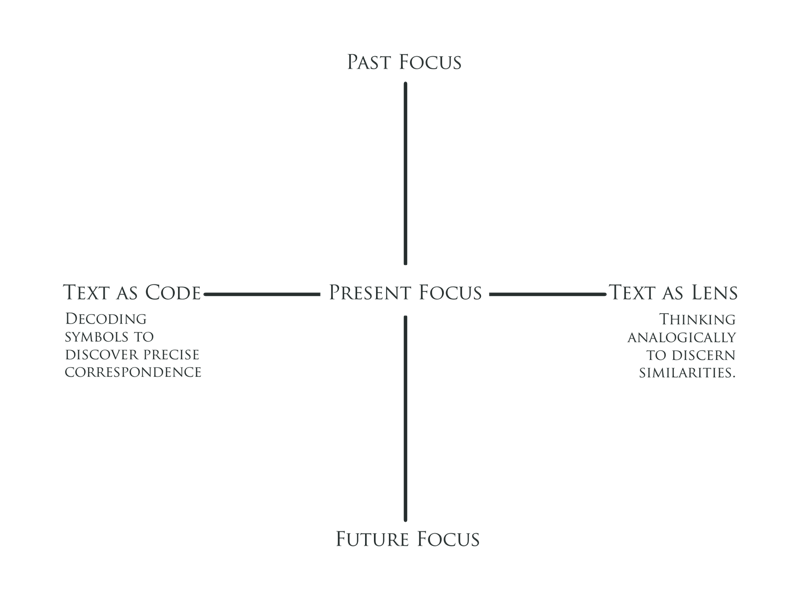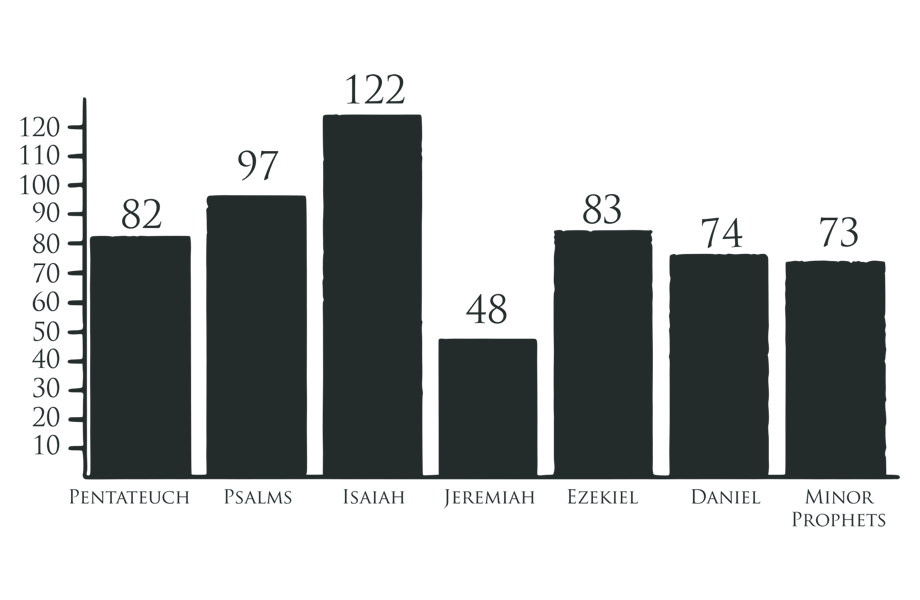This is an adaptation of the ninth talk from a 2022 sermon series — you can listen to it as a podcast here, or watch it on video. It’s not unhelpful to think of this series as a ‘book’ preached chapter by chapter. And, a note — there are lots of pull quotes from various sources in these posts that were presented as slides in the sermons, but not read out in the recordings.
Content warning — we are going to be talking about violence; and I am going to touch on the way that violence is gendered, especially around family violence, and I do not want that to take people by surprise.

If I asked you to describe the stories you have been consuming lately in a sentence, how would you do it?
Here are a few of mine:
An elite soldier’s unit and family are killed as a result of a deep state conspiracy involving the military and big pharma, so he goes on a rampage, killing everyone involved.

Or…
A retired military police officer hitchhikes around the U.S. and manages to stumble into a deadly conspiracy; he uses his investigative skills and capacity for violence to solve it.

Or… and this one was a favourite… A folk-singing spy with PTSD, whose father works for the CIA, is sent undercover in an engineering firm so he can prevent the election of a pro-nuclear Iranian presidential candidate, or failing that, assassinate him; he sings his way through his trauma and questions about the cost of participating in violence.

At the time of preaching this series, Amazon had just launched the new Rings of Power Tolkien epic, which is fascinating because Tolkien thought very carefully about stories and their power — and about technology and the way it changes us.
In a letter about Middle Earth he explains that magic in his world — especially the destructive magic of Mordor — was a picture of the machine in ours.
“He will rebel against the laws of the Creator — especially against mortality. Both of these will lead to the desire for Power, for making the will more quickly effective — and so to the Machine (or magic).”
— Tolkien
The machine is operating through:
“… all use of external plans or devices instead of development of the inherent inner powers or talents — or even the use of these talents with the corrupted motive of dominating: bulldozing the real world, or coercing other wills.”
He sees this as the operations of “the enemy” — who he calls the “Lord of Magic and machines.” He says:
“The enemy in successive forms is always ‘naturally’ concerned with sheer Domination, and so the Lord of magic and machines.”
This created stuff warps us — like the One Ring warped Gollum — and anyone who wields it, and perhaps like swords and weapons shaped those who wield them; coming with a cost — the sort that get explored through the violent battle for Middle Earth.
The thing about stories is that they are powerful; they shape our understanding of the world — they shape our imaginations and desires, just like images — stories are part of what Charles Taylor, and Jamie Smith (who was the guy who wrote You Are What You Love), call the social imaginary — the background to our beliefs; the stuff that shapes our imagination.
“A social imaginary is not how we think about the world, but how we imagine the world before we ever think about it… it is made up of, and embedded in, stories, narratives, myths and icons.”
— James K.A. Smith
It is not just architecture and images that shape us — stories do as well. They help us make sense of the world; stories are what help us figure out what data we receive as “truth,” and what we do not.
“These visions capture our hearts and imaginations by ‘lining’ our imagination, as it were, providing us with frameworks of ‘meaning’ by which we make sense of our world and our calling in it.”
You could argue that telling stories — whether it is history, or fiction, or the myths — the big stories we live by — is part of being made in the image of the God who has structured history, and his word, as a story; that one of the things that separates us from other living creatures is that we tell stories — you do not see koalas building libraries.
Stories also shape the way we live — they teach us how we should live. There is a philosopher, Alisdair MacIntyre, who reckons the modern world has become a bureaucratic machine, where asking “how should I live?” gets reframed as “what is the most efficient way to make things happen.” He reckons the way out of the machine is to recognise the place of story in our lives, and in cultivating virtue; and that we can only know how we ought to live in this world if we can understand ourselves living in a story — knowing our origins, our beginning, our setting, and our destination — and who we need to be to get there.
“I can only answer the question ‘what am I to do?’ If I can answer the prior question: ‘Of what story or stories do I find myself a part?’”
— Alisdair MacIntyre, After Virtue
The “machine” means we often treat “non-fiction” — facts — as more important than stories, but this is making the mistake of treating us more like robots than humans; we live and breathe stories.
We spent some time previously unpacking Israel’s origin story — the creation story in Genesis — and imagining how it shaped the life of God’s people, not only living as God’s priestly image-bearing people in the Eden-like promised land, looking after the temple —
but imagining how that story might have shaped Israel to live differently in Babylon, where life was defined by an altogether different story — we dug into it a bit — the Enuma Elish — the story of the gods of Babylon creating the world through violence, from the bodies of dead and defeated gods.
Last week we talked about the powers and principalities that the New Testament describes operating to keep us captive; these spiritual powers are the animating forces behind the systems that make us less than human as we get swept up in them so that we are imprinted by them to represent those powers; to live, so to speak, as characters in their stories (Ephesians 6:11-12). In Babylon the powers operated through an idolatrous regime that celebrated violence.
Walter Wink was a Pentecostal theologian — he wrote a book called The Powers That Be about these systems that we can observe in the world. He was probably less inclined to see spiritual beings pulling the strings behind these observations, and more inclined to see collective human rebellion against God — but he talks about how the same story that animated Babylon, through its creation story — the idea that killing is in our genes; that to be human is to fight against evil, to destroy enemies, with violence — animates the empires of the modern West. He says of the way this story permeates our imaginary:
“The implications are clear: human beings are created from the blood of a murdered god. Our very origin story is violence. Killing is in our genes.”
— Walter Wink
It is this story, that he calls the myth of redemptive violence — the idea that whatever the problems we face, at the end of the day victory will take violence — heroic standing up against the forces of evil and triumphing, throwing them back into the abyss while wielding a sword.
“This Myth of Redemptive Violence is the real myth of the modern world. It, and not Judaism or Christianity or Islam, is the dominant religion in our society today.”
— Walter Wink
It is this story, not the Gospel, that shapes the politics of a post-Christendom world; and is the dominant religious story in our world; it is behind how we “imagine” the world before fleshing it out.
“By making violence pleasurable, fascinating and entertaining, the Powers are able to delude people into compliance with a system that is cheating them of their very lives.”
It is the myth you will find making violence entertaining — in The Terminal List, and Reacher — and even in Rings of Power — deluding people into compliance with a deadly and dehumanising system. Our stories are a little more complex — all these stories are critiquing violent conspiracies and evil, even embodied in a deep state — but they are offering violent solutions, even if, like in Patriot and Middle Earth, the stories leave us asking questions about the cost of wielding the sword. These powers — idol machines — do not just use one story, but this myth of redemptive violence is built into our world, and it is destructive.
Wink reckons there is more going on under the hood in our entertainment, the stories we consume, than we realise. He says in this story politics becomes ultimate; the state and its armed forces are responsible for throwing chaos into the abyss, and those who buy the story will offer themselves up for holy war.
“Salvation is politics: the masses identify with the god of order against the god of chaos, and offer themselves up for the Holy War that imposes order and rule on the peoples round about. Peace through war; security through strength: these are the core convictions that arise from this ancient historical religion, and they form the solid bedrock on which the domination system is found in every society.”
This myth props up what the former U.S. President Dwight Eisenhower called the military-industrial complex as he left office in 1961. We talked about this back in our Revelation series.
He was worried about the rapid development of an arms industry as a product of the Cold War. He said American factories once made ploughs, but they had learned to make swords, in a permanent industry of vast proportions designed to supply the armed forces.
“American makers of plowshares could, with time and as required, make swords as well… We have been compelled to create a permanent armaments industry of vast proportions…”
— Dwight Eisenhower, Farewell Address, 1961
He reckoned people had to be really careful about the way people making money from this industry would chase power and influence, because it had the potential to change the economic, political, and spiritual makeup of the country.
“We must guard against the acquisition of unwarranted influence, whether sought or unsought, by the military industrial complex.”
And this seems a world away from us, here in a small church in a city across the world, but the degrees of separation might be smaller than you think. Our military industrial complex is a lot smaller than the U.S. We look at their gun culture as an idol, while consuming the same stories that justify those cultural norms — the same stories that prop up this idea that nations solve problems with violence — and these stories also prop up the idea that individuals should use violence to solve problems, and especially that men should; they shape how we understand masculinity.
Did you notice that the three shows I started out talking about all have violent men as heroes? There is a certain view of the world that sees masculinity as being about male power — the capacity for violence — so they can be protectors, and so women can swoon over such masculine men.
It is not just our entertainment — so much of our Christian content, the books we read, the stuff we listen to or watch, comes from the U.S. And the church in the U.S. has shown itself, in the last few years, to be marching in lockstep with the dominion system. This same myth of redemptive violence is used to justify grabbing hold of political power to win a culture war, or any sort of conflict against your enemies.
There is a writer in the States, Kristin Kobes Du Mez, who wrote this book Jesus and John Wayne, exploring how this same myth has embedded itself in the church.
We are products of our culture; of what we consume, she says:
“The products Christians consume shape the faith they inhabit.”
She traces the way that the modern church has developed a sort of “militant masculinity” — idolising power and the capacity for violence, militant heroes like the western star John Wayne.
“For many evangelicals, these militant heroes would come to define not only Christian manhood but Christianity itself… Wayne modelled masculine strength, aggression, and redemptive violence… Little separated Jesus from John Wayne. Jesus had become a Warrior Leader, an Ultimate Fighter.”
This is a picture of our “social imaginary” preconditioning us to read the Gospel stories in a particular way that is more Babylonian than Biblical.
She has the receipts — she quotes a guy named Doug Wilson, who, thanks to the Internet, enjoys a pretty wide readership in Australia. In one of his books, Wilson says it is essential for boys to play with swords and guns; to meet a deep need to have something to defend, something to represent in battle. You might have heard stories like this; that there is this inbuilt capacity for violence that is necessary in case you have to save someone.
“… it is absolutely essential for boys to play with wooden swords and plastic guns. Boys have a deep need to have something to defend, something to represent in battle.”
— Doug Wilson
Note: since preaching this series in 2022, Wilson’s infamy and influence has increased and in a recent “no quarter November” he was selling branded flamethrowers.
For Wilson, to beat our weapons into pruning hooks too soon — to not be part of the military-industrial complex and buying the myth of redemptive violence — that will leave us fighting the dragon with a pruning hook.
“And to beat the spears into pruning hooks prematurely, before the war is over, will leave you fighting the dragon with a pruning hook.”
— Doug Wilson
Like Eisenhower, he has this passage from Isaiah in mind — where God will bring restoration and a transformed world, replacing war, violence, with peace, so that instead of making weapons people will make farming tools, pruning hooks and ploughshares.
“He will judge between the nations and will settle disputes for many peoples. They will beat their swords into plowshares and their spears into pruning hooks. Nation will not take up sword against nation, nor will they train for war anymore.”
— Isaiah 2:4
Folks like Wilson do not think that day of the Lord has come yet. For them we should still be armed and dangerous, with the weapons of the world.
Du Mez also points out just how angry Wilson got at the idea women might be warriors, for a bunch of reasons including that they are not as good at the “important work of violence.” Now, you have probably got your own thoughts about women becoming soldiers, but that is not the point. When you make the enemy someone who can be stabbed, you rob women of their place in the battle against the powers.
“… they were a sexual distraction to male soldiers, they could get pregnant, they distorted ‘covenantal lines of authority,’ and they were not as good as men in ‘the important work of violence.’”
When Eve is created as Adam’s helper (Genesis 2:18), it is the word ezer; a word with military connotations — more like ally — that is used of God throughout the Bible. Ultimately this myth of redemptive violence, that wants men wielding swords and fighting people, is the myth of redemptive patriarchy; a myth of redemptive male violence.
It is a myth built on the cursed pattern of relationships in Genesis 3 where “he” rules over “her” — not where they rule together and she is an ally in the cause. And we do have a problem with the myth of redemptive patriarchy and male entitlement through power here in Australia. It is expressed in the rate of family violence perpetrated by men in our country, and the soaring numbers of sexual assaults perpetrated by boys in our schools. This does not come from nowhere; it is supported by narratives that paint heroism as using power to make the world what you think it should be. Domination, rather than the sort of dominion we were made for, is built into our lives at a societal level, and an individual level.
I am not sure these folks going on about taking up the sword, with a vision of masculinity that sees an inherent capacity for violence, have read their Bibles, where our enemy is not flesh and blood, but the devil, and his schemes, these powers, spiritual forces (Ephesians 6:11-12) — a real gun is not going to be much more useful than a toy one at this point.
And the “armour of God” we use in this fight — it is not armour geared towards violence; the sword in this war is the word of God; get your kids to play with it. And the way of life that prepares us for this fight is not playing with guns, it is prayer (Ephesians 6:17-18).
Plus, even though our enemy is the dragon-serpent — if we take up the sword and respond with violence, the story of the Bible seems to be that we defeat ourselves and choose his side — and the victory over the dragon comes through non-violent redemptive sacrifice.
Satan enters the scene as some sort of legged serpent, a dragon (Genesis 3). And then, when Cain is angry at Abel, God says sin is crouching at the door — like some personified wild animal, a power, desiring to have him (Genesis 4:7). And when he gives in to that power, he gets violent; he kills his brother (Genesis 4:8). This is a thread we traced through Genesis; to Nimrod, the violent killer who built Babylon and Assyria (Genesis 10:9-12).
The temptation Satan offers through the powers is the same one he offers Jesus in the wilderness — as we saw in Matthew — the temptation to grab hold of the kingdoms of the world with power (Matthew 4:8-9); to play the Babylon game; to run a domination system, or enjoy its rewards. To bow down to the dragon and serve his kingdom, embracing his way of death. And Jesus does not grasp. We do not actually fight the dragon — we are not the hero. Jesus does. Jesus is. And he tells us his kingdom features peacemakers (Matthew 5:9), that his people will reject violence, and turn the other cheek (Matthew 5:39), and love our enemies (Matthew 5:44), and he tells his disciples to put away their swords, because those who draw the sword will die by the sword (Matthew 26:52).
The whole point of his life was to model something different to a life under the powers, the power of Satan — the violent dominion systems, because he came to model the kingdom of God, and invite us to join him in it. Even if Revelation depicts him defeating the dragon, his victory is won at the cross, through the blood of the lamb (Revelation 12:9, 11). He confounds the beastly myth of redemptive violence and provides an altogether different story for us to live by, just like Genesis did for Israel. And he calls us to put away our swords, deny ourselves, and take up our cross — following him (Matthew 16:24). Jesus invites us to life not under the powers — the power of Satan — the violent dominion systems, but in the kingdom of God. He invites us to life in a different story — the story told in the Old Testament from start to finish — from Moses to the Prophets — Jesus says he is what holds the story together (Luke 24:26-27). He says the Law, the Psalms, and the Prophets — the whole Old Testament — are written about him; that he has come to fulfil them (Luke 24:44), and that this fulfilment is not found in wielding a sword, but suffering and death on a cross, by being crucified by those who wield swords, so that he might bring forgiveness of sins and new life by the Spirit (Luke 24:46-47). His death and resurrection are the climax of history, and of the integrated collection of books in the Old Testament.
The whole story of the Bible is a story that invites us to be truly human by resisting violence and domination and the powers, and finding life in God’s kingdom.
In this story we are not the hero. We cannot save ourselves or fix the world, and the military industrial state cannot throw back the forces of chaos, because they are often aligned with the forces of chaos, even as God appoints them as the sword. Heroism in this story is not about the sword; the sword is deadly. It does not just kill our enemies as we swing it, it destroys us with every blow; violence disintegrates us, taking us further away from the life of love we were created for, that Jesus embodies.
The way of life that comes with the story of Jesus is to take up our cross. It is the life Paul describes in Philippians 2 (Philippians 2:5). A life shaped by Jesus and his story, because his story is now our story, and it provides the pattern for all our relationships. And I want to suggest that life in this story is going to involve two commitments that change how we engage in the world in ways that make us truly human — first, a commitment to being better readers of stories, and second, committing ourselves to living in God’s story, the story of Jesus, and so embracing non-violence as we embody the story of Jesus.
This will mean becoming better readers of the Bible — the sword we are meant to wield — and participants in its ongoing story, so it shapes our lives and actions (Ephesians 6:17). I reckon, often, we are not great readers of the Bible, and part of the key to reading the Bible well, especially in narrative bits, is not just to see Jesus as the fulfilment of the story, but to ask “am I seeing behaviour that is like Jesus in this story, or like the pattern of the dragon, or cursed relationships?”
The Bible is full of descriptions of violence, but that violence normally gets destructive and out of hand rather than being redemptive. So we will celebrate David slaying his giant — explicitly without a sword (1 Samuel 17:50) — but not notice how violence becomes embedded in his family system and basically destroys everything as his sons go to war with him, and each other (2 Samuel 12:10). And somehow we will say Christian men need swords or guns or violence (or flamethrowers). The story of the Bible exposes the problem with our hearts, and with the idea that we can turn to violence to solve our problems.
Being better readers of stories might also mean reading better stories. Karen Swallow Prior, who I mentioned last chapter, is a professor of literature. She has written a book called On Reading Well, about how the stories we choose to engage with can be paths to cultivating virtue, because stories do actually teach us how we should live. She reckons stories work better than facts, or other forms of education that focus on techniques, because they let us imagine different experiences so we can explore new ways to live.
“Literature replicates the world of the concrete, where the experiential learning necessary for virtue occurs. Such experiential learning does not come through technique.”
We see characters reacting to situations in ways that are concrete where ideas might be abstract. So the sorts of stories we watch, and the sort of characters that shape our imagination — that matters. As we judge the characters we encounter that shapes our own character.
“… the act of judging the character of a character shapes the reader’s own character. Through the imagination, readers identify with the character, learning about human nature and their own nature through their reactions to the vicarious experience.”
But this will also mean being more sensitive to the formative power of stories around us — not just the myth of redemptive violence, but visions of the good life built on grasping and consuming and being the hero of our own story — so we can spot the powers and disarm them, and expose them to rob them of their power over us and others; and that we might even choose stories that cultivate virtue in us.
And maybe we need more Inklings — more Tolkiens and Lewises telling stories — whether in books, or TV, or video games, or just to our kids at night — that subvert the powerful myths of our world, that offer escape, and even what Tolkien called “the eucatastrophe” — the unexpected happy ending.
“The eucatastrophic tale is the true form of fairy-tale… the consolation of fairy-stories, the joy of the happy ending: or more correctly of the good catastrophe, the sudden joyous ‘turn.’”
— Tolkien, On Fairy Stories
Tolkien believed our hearts desire this eucatastrophic moment because we are created to experience the unexpected happy ending caught up in Jesus’ life, death, and resurrection.
“The Gospels contain a fairy-story, or a story of a larger kind which embraces all the essence of fairy-stories. They contain many marvels… among the marvels is the greatest and most complete conceivable Eucatastrophe.”
So that is the first bit. The second bit is a commitment not just to believing the story of Jesus is true, but to living in it — which will mean letting it provide the shape of our life. That will mean rejecting the myths offered by our world, by the powers, including the myth of redemptive violence, and arming ourselves instead with the sword that is God’s word by taking up our cross and following Jesus. This is harder than it sounds, but it is also less abstract than it sounds, because it is exactly what Paul is describing in Philippians 2. This is, in MacIntyre’s words, the story that teaches us “what we are to do” in any moment. The death and resurrection of Jesus are the culmination of the story of the Bible — the story that reveals the truly human life to us, both the way to life and a way of life.
The theologian Michael Gorman has been mega-helpful to me with this stuff, and he reckons Philippians 2’s retelling of the Gospel is both the central organising story of Paul’s life, and of our life as Christians. He says in the cross and resurrection Paul sees God revealing that faithful and holy opposition to evil — redemption — is not found through inflicting violence, but through absorbing violence and death, turning the other cheek.
“Covenant fidelity, justification, holiness and opposition to evil are not achieved by the infliction of violence and death but by the absorption of violence and death.”
I want to be careful here, because I am not saying that if you are being abused by the sort of person who believes that violence is a legitimate answer you should stay subject to that relationship, or the violence. What I am saying is that responding with violence, taking up the sword, produces a vicious cycle, and to forgive and relinquish that right to take up the sword and destroy your enemy is to embrace the way of Jesus. Wielding the sword, turning to violence, will always shape us, and it will shape us to believe and participate in a story that is counter to the Gospel. This also does not mean we do not let those whom God has given the sword — the government — pursue justice.
But this is where we go wrong when we think the idea for raising masculine men is teaching boys to play with guns and swords, encouraging them to kill the giants or dragons in their lives, to be the hero, and teaching girls to look for a violent protector, rather than teaching them to fight evil not by repaying evil with evil, but by embracing life in God’s story.
In this story the dragon loses as God’s power is displayed in the weakness of the cross, in Jesus’ refusal to grasp power the way Satan tempts us to, and as the full weight of the violent dominion system is brought against Jesus, God is liberating humans — his violent enemies — by forgiving us instead of crushing us and destroying our rebellion.
“The normal human temptation to squash enemies, to eliminate the impure other, is not the response of God in Christ. Instead, God reaches out to reconcile: people to God, and people to people.”
This is not the myth of redemptive violence but the story of redemptive love and grace. Our normal human impulse to squash our enemies is not the way God works. God works, through Jesus, to reach out and bring reconciliation; between us and him, and between us and each other.
This experience of love as the story of the Gospel becomes our story shapes how we live as disciples of Jesus; as we take up our cross, not because we have to throw the forces of chaos back into the abyss, but because we recognise that this is how Jesus did it, this is how he resisted the powers. He did not grasp, or embrace violence, but gave his life, suffering death on a cross (Philippians 2:6-8).
Gorman says these verses are showing us what true humanity looks like, in contrast to Adam, and what true divinity looks like, as we seek to bear God’s image in the world. He says to be truly human is to be Christlike, which is to be Godlike — and for Paul, and for Gorman, this means to be crosslike in our life in the world.
“The incarnation and cross manifest, and the exaltation recognises, Christ’s true humanity, in contrast to Adam, as well as his true divinity. Therefore, to be truly human is to be Christlike, which is to be Godlike.”
The Gospel is a story that does not just restore our relationships from a pattern of sin, to a pattern of godlikeness, it transforms the way we see masculinity, or femininity — our humanity — it reshapes all our relationships, and how we understand life imitating our hero as we are transformed into his image. It calls us from violence and into communion and love and a life of reconciliation and peacemaking.
He says the church is a community that inhabits the life of God by inhabiting God’s story, as God inhabits us by his Spirit and transforms us into people who reveal his character in our lives. Our life story, in relationships pursuing the way of Jesus, embody and proclaim the story we are part of. The participation in this story and retelling of this story shapes us because it becomes the story that shapes our actions in the world.
“The church inhabits this triune, cruciform God, who in turn inhabits the church. Thus the church’s life story embodies and thereby proclaims the narrative identity and gracious saving power of the triune God.”
God is inviting you into his life, and into his story — to leave the stories of the powers behind, the violent ways of death and destruction, and find life together with him, and so to become truly human. Will you keep living as people shaped by his story as we dwell in it together?


